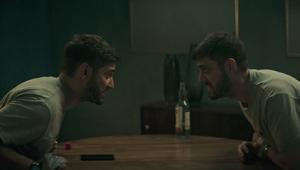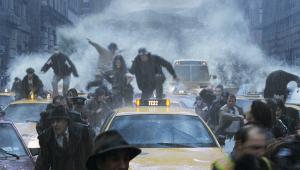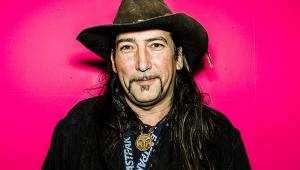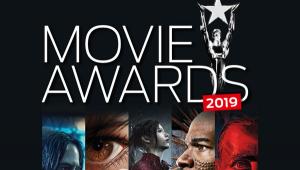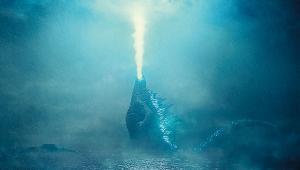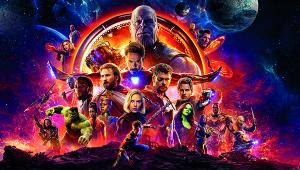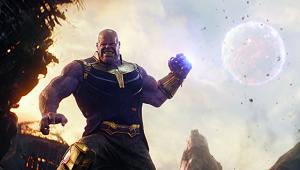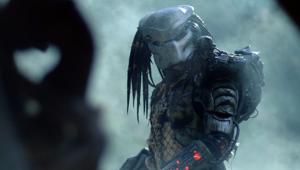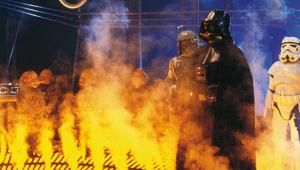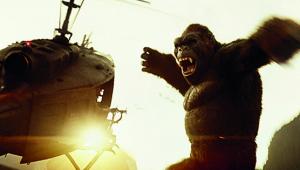Magnificent Marvels
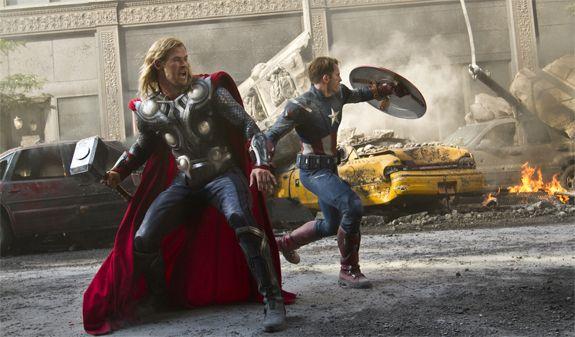
During the golden age of cinema, the so-called ‘studio system’ ensured Hollywood could monopolise the biggest stars of the era to guarantee box office returns. Today, audiences are more fickle. Even A-listers can be a gamble. If you want to put bums on seats, shift Blu-rays by the bucket load and rack up those streaming receipts, then you need heroes. Really big ones, preferably with iron suits, hammers and shields. And if you’ve got a Hulk, that helps too.
We’re not alone in predicting Joss Whedon’s Avengers Assemble movie will land big at the box office. It’s not a stretch to suggest that it’ll also be one of the hottest Blu-ray pre-orders of the year, either. The only genuine surprise about Avengers Assemble is that it was made at all. Just sixteen years ago the Marvel empire was on its knees, beaten to the brink of bankruptcy.
With the hoopla surrounding Earth’s Greatest Heroes, it’s easy to forget that Marvel’s comic book stars were far from successful when they were first lifted from the printed page.
Despite early success with animated shows, attempts at live action were dogged by failure. Nicholas Hammond was a charisma-vacuum in long-johns in the ill-fated (1977) Spider-Man TV series. While The Incredible Hulk (1978), featuring Bill Bixby and Lou Ferringo, is more kindly remembered, both were distanced from the real Marvel universe by budgetary and licensing constraints. For co-creator Stan Lee, Marvel’s formative dalliances with primetime were a period of immense frustration. In an interview in 1987, Lee described the Spidey TV show as ‘terrible’, adding that it ‘had no similarity (to the comics) whatsoever’.
And then there was Captain America and The Fantastic Four. The former, released in 1990 and starring Matt Salinger (son of The Catcher in the Rye author J.D. Salinger) as the first Avenger, was an abomination. And the latter? Shot in 1994, and produced by the legendary Roger Corman, it was a low-budget rush job made solely to ensure studio Constantin Film didn’t lose its rights to the franchise, and was never intended for release. The curious among you can check it out on YouTube.
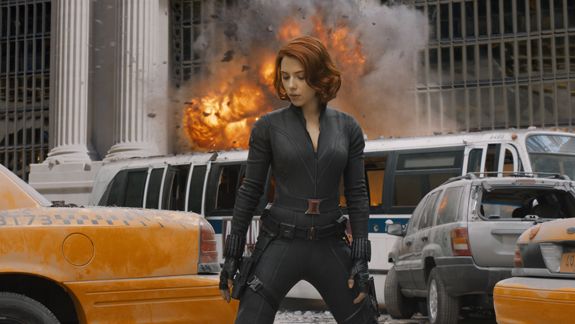
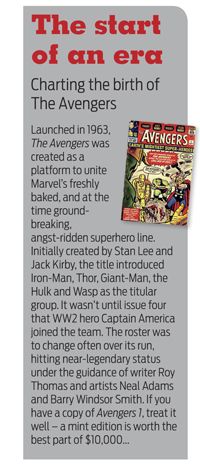
So while rival DC Comics ruled the roost with its Batman exploits, Marvel was a cinematic laughing stock. And things got worse. In 1996 Marvel was forced to file for Chapter 11 bankruptcy protection. Ronald Perelman, who acquired the Marvel Entertainment Group in 1989, had floated the company and gone on a massive spending spree, just as the bottom fell out of the hardcore comics market. The coffers were empty, and for a while it looked like the business could be shuttered. Only a merger with Toy Biz, which had a longstanding and profitable licensing deal to produce Marvel action figures, saved the company from a firesale that could have seen its flagship heroes ignominiously sold off.
In the years that followed, the Marvel stable was optioned and licensed with bewildering frequency. Fox acquired the X-Men, Fantastic Four and Daredevil, while Sony ensnared the Spider-Man and Ghost Rider. New World picked up (and shot down) The Punisher, while Universal enraged The Incredible Hulk. Lesser characters were traded and bundled like… well, comics really.
Thankfully for fans the world over, Marvel finally got its house in order with the creation of its own production company. No longer would it just license out its crown jewels, it would take ownership of them. Funded by Wall Street, Marvel Studios signed a distribution deal with Paramount for a slate of features. Its big idea was to produce a string of solo superhero movies that would lead to an Avengers spectacular.
Marvel’s first release took a second tier character and turned him into a superstar; Iron-Man opened to solid reviews and ringing tills in 2008. Whether its extraordinary success was due to the inspired casting of Robert Downey Jr, the respect shown by director Jon Favreau to the source material, or a cameo by Stan Lee, is open to debate. It goes without saying that any self-respecting home cinema freak that doesn’t have a copy in their Blu-ray collection should collect their Merry Marching orders forthwith.
Marvel’s Avengers game-plan was publicly revealed in Louis Leterrier’s Incredible Hulk reboot, which bowed a few weeks later. The movie featured a post-credit tease in which Tony Stark appears in front of a dejected ‘Thunderbolt’ Ross, teasing: ‘What if I told you we were putting a team together?’ Suddenly the hearts of comic fans began to beat a little faster.
Sensing a good deal, Disney swooped in and pocketed Marvel Entertainment for a paltry $4billion. The Mouse House also bought Paramount out of its distribution deal, thereby gaining total control over the House of Ideas.
At the close of Iron-Man 2, a second stinger revealed Thor’s hammer being discovered in the Mexican desert. One after another, Marvel’s movies were entwining...
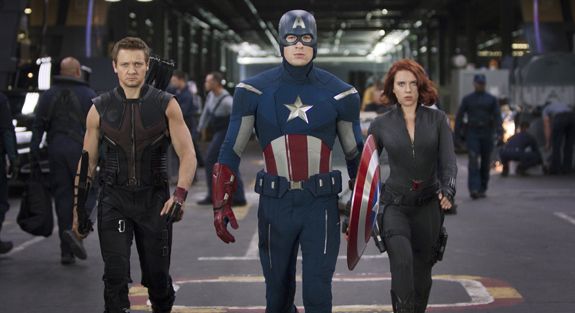 The final Avengers
The final Avengers
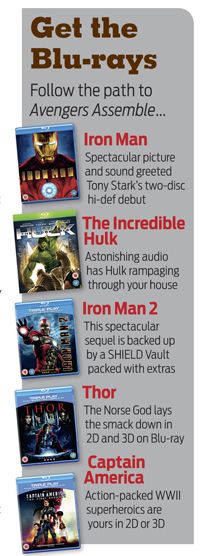
Of course, this initiative could have derailed dramatically had either Captain America or Thor, two of Marvel’s riskier properties, floundered. Thankfully, they didn’t.
Joe Johnston’s Captain America: The First Avenger paid no heed to either the loopy Republic serial released in the 1940s (in which there is no Steve Rogers or Super Soldier serum, just a gun-toting district attorney named Grant Gardner), the dreadful 1970s TV movie or the previously mentioned 1990 flick. Instead it opted for rip-snorting WW2 action and adventure.
Making Norse god Thor work for a modern cinema audience was an even bigger ask, but astonishingly Kenneth Branagh pulled it off. Big on spectacle, with sharp self-depreciating humour, this epic yarn fills in crucial parts of the Avengers mythology without looking overly silly. Branagh says he jumped at the chance to tackle the movie because the idea of helming Thor took him back to his childhood. Marvel’s original concept was to set the film at the time of the Vikings, but Branagh countered with a contemporary proposal. Tellingly, the post-credit stinger on Thor was directed by Joss Whedon. The bridge to this year’s Avengers Assemble was complete.
Against the odds, Marvel has created a cohesive cinematic universe for its franchise characters; engendering the same level of fannish excitement Marvel’s original comics did in the 1960s when heroes first began crossing across titles. In a 1999 interview, Stan Lee recalls of the ploy: ‘Remember, I was writing virtually all those comics myself, and by writing them all myself, it was easier to hold them all together. It made the characters more real to me by having them meet each other. I used to imagine that they lived in their own world: the Marvel Universe!’
This conceit isn’t that new. Universal Studios crossbred its big-screen monster stable back in the 1940s. The formula is a proven money-spinner. Let’s just hope that Abbot and Costello aren’t enrolled as S.H.I.E.L.D agents anytime soon...
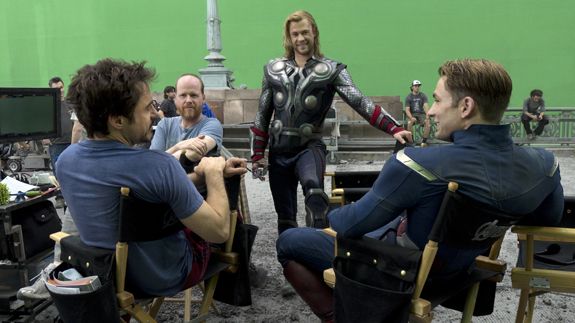 Fanboy in charge
Fanboy in charge
Joss Whedon (picture above, on set with Robert Downey Jr, Chris Hemsworth and Chris Evans) was announced as Avengers Assemble director at the 2010 Wizard World comic fest by Marvel Studios CEO Avi Arad. The full cast reveal followed at the San Diego Comic Con several months later, where Mark Ruffalo ousted former Hulk Ed Norton, following that star’s acrimonious bust up with Marvel creatives (by all account, Norton was green with rage).
Whedon certainly has the chops for the job. Not only has he a string of genre shows to his credit (Buffy the Vampire Slayer, Angel, Firefly and Dollhouse), he’s also written an arc or two for the company’s Astonishing X-Men book. Whedon was previously linked to a possible Wonder Woman movie but ended up walking away due to creative differences.
The pop culture maven appears to be taking inspiration both from the original 1960s Avengers run, written by Stan Lee, and the more recent ‘modern’ retelling from Marvel’s Ultimate Comics line. Of the story, he says: ‘It makes no sense, it’s ridiculous. There’s a thunder god, there’s a giant rage monster, there’s Captain America from the 40s, there’s Tony Stark who definitely doesn’t get along with anybody...’ The idea, he says, is ultimately about community. ‘Obviously this will be expressed through punching but it will be the heart of the film.’
Whedon adds that he was also inspired by Black Hawk Down. ‘That’s when I realised that we needed a war movie.’ With so many heroes on screen, he says, the only way they could earn their keep was to go through ‘the meat grinder.’
So where does this leave the Avengers Assemble Blu-ray we all covet so much? Nothing has been announced as yet, but we can guess it’ll debut as a 3D Triple-Play release. It has been converted in post-production to 3D, a process that fans may be wary of but the director apparently approves of. ‘I like to see the space I’m in and relate to it, so 3D kinda fits my aesthetic,’ he says.
We’re also expecting it to contain copious bonus material. The director freely admits that his first edit was three hours long, so there’s clearly plenty of material on the cutting-room floor. ‘There was no way a movie with this many great actors and this much epic scope was going to clock in under two hours and not feel a little anemic,’ he warns.
So dare we hope this means an extended Director’s Cut is on the cards in 2013? If so, count us in! In the meantime, we’ll just quietly shine our shields and wait for the official word. And if they don’t give us what we want? In the words of a certain billionaire industrialist playboy, we’ll just have to have to avenge it!
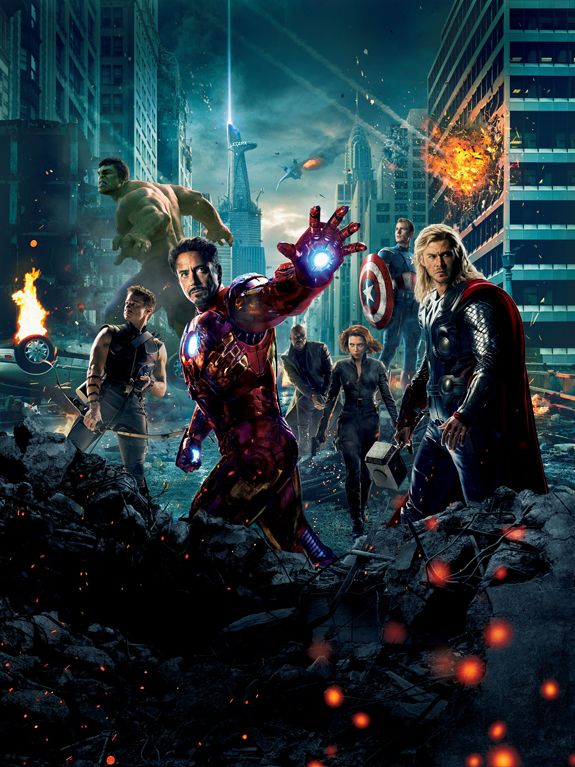
This article first appeared in the Awards 2012 issue of Home Cinema Choice.
Have you seen Avengers Assemble yet? If so, register with the site and let us know what you think in the Comments section below.
 |
Home Cinema Choice #351 is on sale now, featuring: Samsung S95D flagship OLED TV; Ascendo loudspeakers; Pioneer VSA-LX805 AV receiver; UST projector roundup; 2024’s summer movies; Conan 4K; and more
|



